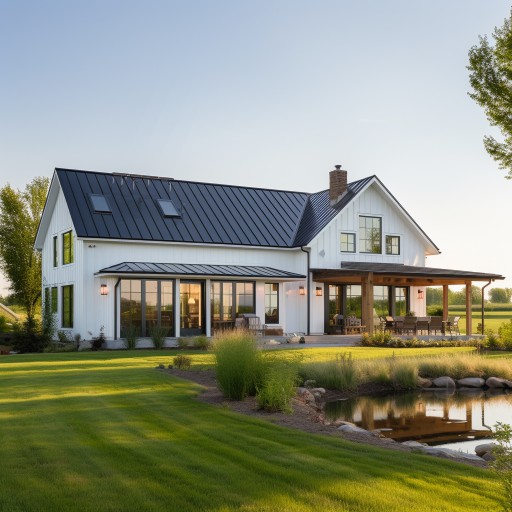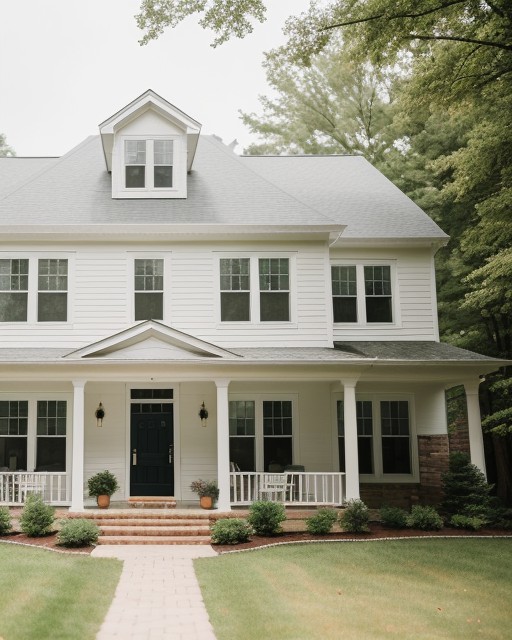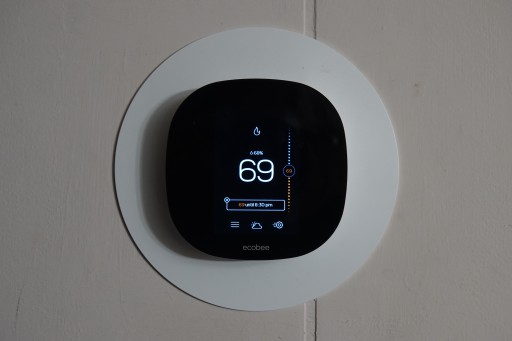Insulation and HVAC Systems in the Northeast

co-founder
- The Unique Climate of the Northeast US
- Insulation – Your Home’s Shield Against Temperature Extremes
- Attic Insulation – The Unsung Hero of Energy Efficiency
- The HVAC System – The Lifeline of Home Comfort
- Selecting Your HVAC System – Making the Right Choice for Your Home
- Maintaining Your HVAC System – The Secret to Longevity and Efficiency
- Smart Thermostats – The Future of Temperature Control
- Sustainable Living – A Comprehensive Approach
- EcoHome – Your Guide to Sustainable Living
The Northeast United States is a region characterized by its stunning seasonal changes and weather extremes. The team at EcoHome lives in New York, and as we find ourselves contending with hotter summers and stranger winters due to climate change, we know firsthand the necessity of maintaining an energy-efficient home environment. Central to this are two crucial elements of home design and maintenance: insulation and HVAC systems. This guide aims to provide you with an in-depth understanding of these elements, their importance, and how to optimize them for maximum comfort and energy efficiency when you're on your journey to decarbonize your home.
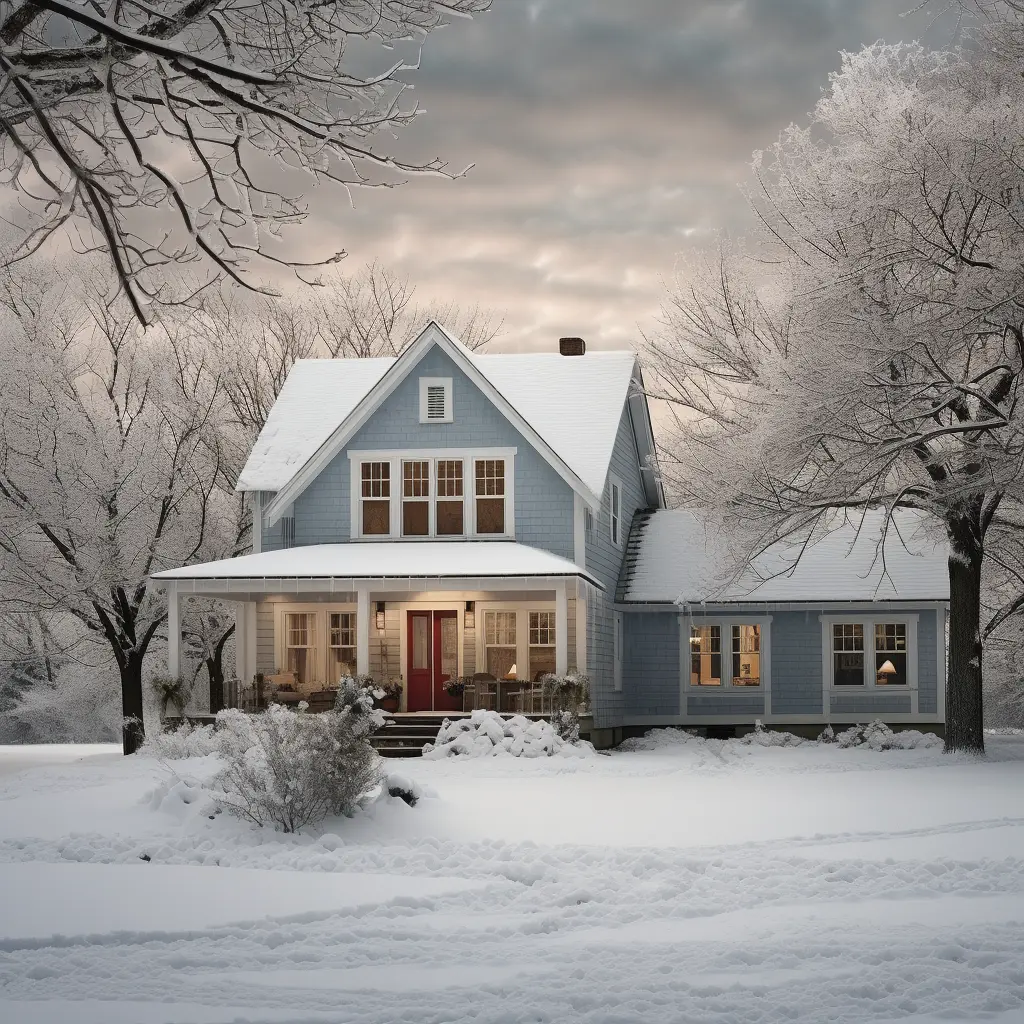
The Unique Climate of the Northeast US
Before we delve into the details of insulation and HVAC systems, it's important to understand the distinct climate conditions that make the Northeast US unique. This region, encompassing states from Maine to Maryland, experiences a humid continental climate, characterized by cold, snowy winters and hot, humid summers. A Hudson Valley home renovation is going to be very different than one in the Midwest or the South.
These temperature extremes present unique challenges to maintaining a comfortable, energy-efficient home. In summer, keeping the intense heat and humidity out is crucial, while in winter, retaining heat becomes a priority. The air quality can also be a concern, with pollen levels in the spring and fall triggering allergies, and the cold winter air often being dry and uncomfortable. As such, a well-designed and maintained home environment is essential to provide comfort, health, and sustainability year-round.

Insulation – Your Home’s Shield Against Temperature Extremes
Understanding Insulation:
Insulation is a critical component of an energy-efficient home, particularly in regions with harsh weather conditions like the Northeast US. It functions as a barrier that reduces the heat exchange between the interior of a building and the outside environment. But what does that mean, exactly?
Insulation materials are designed to resist the flow of heat, characterized by their R-value – the higher the R-value, the greater the insulative effect. In practical terms, during the summer months, a well-insulated house keeps the cool air generated by your air conditioning inside, preventing it from escaping outside. In winter, it acts as a barrier to the cold, keeping the warmth generated by your heating system inside your home. In short, it makes your home cheaper to operate.
A Closer Look at R-Values:
The measure of an insulation's ability to resist heat flow is known as its R-value. This means that a higher R-value represents better insulation properties, making the material more effective at reducing heat exchange. Given the extreme temperatures in the Northeast US, opting for insulation materials with high R-values is recommended.
However, it's essential to note that simply selecting an insulation material with a high R-value isn't enough. The effectiveness of insulation also relies heavily on correct installation. Gaps and cracks, for example, can significantly reduce the performance of insulation. Therefore, hiring a professional insulation contractor who can ensure proper installation is often a wise investment.
Choosing Your Insulation:
The choice of insulation material is dictated by several factors, including the local climate, home design, personal budget, and environmental impact. Popular options include fiberglass, cellulose, and spray foam, each with its own set of pros and cons.
Fiberglass, for instance, is a cost-effective and non-flammable option with a moderate R-value. Cellulose, on the other hand, is an eco-friendly choice, made of recycled materials, and has a higher R-value than fiberglass. Spray foam offers the highest R-values and the unique ability to expand and fill cracks and crevices for a more airtight seal but is more expensive and must be installed by professionals. A discussion with a qualified insulation professional can guide you toward the most suitable choice for your specific needs and circumstances.

Attic Insulation – The Unsung Hero of Energy Efficiency
The Significance of Attic Insulation:
Often overlooked, the attic is one of the most important areas to insulate in your home. Because heat rises, without proper attic insulation, a significant portion of your home's warmth will escape through the roof during the winter months. Conversely, during the summer, your attic can become a hotbox, trapping heat and causing your cooling system to work harder than necessary. Insulating your attic effectively can therefore dramatically improve your home's energy efficiency and comfort.
Types of Attic Insulation:
Just like with wall insulation, there are several options available for attic insulation, including batts (or blankets), loose-fill, and spray foam. Each has its benefits and drawbacks.
Batts, often made of fiberglass or rock wool, are suitable for attics with standard joist spacing and few obstructions. Loose-fill, or blown-in insulation (commonly made of cellulose or fiberglass), is excellent for reaching nooks and crannies and offers good coverage over irregular joist spacing or around obstructions. Spray foam provides the highest R-value and forms an airtight and watertight seal, but it's the most expensive option and requires professional installation.
Installing Attic Insulation:
Proper installation of attic insulation is key to its effectiveness. This includes air sealing any openings to prevent air leaks, maintaining adequate ventilation to prevent moisture buildup, and ensuring insulation is evenly spread without gaps or compressions. Improper installation can lead to decreased efficiency, potential moisture problems, and even structural damage over time. Thus, hiring a professional to handle the insulation job, particularly if you're using spray foam, is highly recommended.

The HVAC System – The Lifeline of Home Comfort
Understanding the HVAC System:
HVAC, or Heating, Ventilation, and Air Conditioning, is a system that maintains a comfortable indoor climate in your home, regardless of outdoor weather conditions. In the Northeast US, where temperatures can swing from one extreme to another, having an efficient and reliable HVAC system is not a luxury, but a necessity.
Heating and Cooling:
For heating in the Northeast, you have several options. Furnaces, powered by natural gas, propane, or oil, are common. Heat pumps, which can provide both heating and cooling, are increasingly popular due to their energy efficiency, especially when used in combination with geothermal technology.
For cooling, central air conditioners are common, but as with heating, heat pumps are an increasingly popular choice. They function by essentially reversing the heating process, removing warm air from your home and replacing it with cooled air.
Ventilation:
Beyond heating and cooling, ventilation is another critical function of HVAC systems. Proper ventilation is necessary for maintaining indoor air quality by cycling out stale indoor air and replacing it with fresh outdoor air. It also helps to control moisture levels, reducing the risk of mold growth and other potential health hazards.
Efficiency Ratings and Their Significance:
Efficiency ratings for HVAC systems are critical to understanding their energy consumption and performance. These ratings include SEER (Seasonal Energy Efficiency Ratio) for cooling systems, AFUE (Annual Fuel Utilization Efficiency) for furnaces, and HSPF (Heating Seasonal Performance Factor) for heat pumps.
A system with a high SEER, AFUE, or HSPF rating will be more efficient, meaning it will use less energy to provide the same amount of heating or cooling as a system with a lower rating. This increased efficiency translates to lower energy bills and a smaller carbon footprint, making it an environmentally and financially smart choice.
Selecting Your HVAC System – Making the Right Choice for Your Home
Understanding Your Specific Needs:
When it comes to choosing an HVAC system for your home, one size does not fit all. Your choice will depend on a variety of factors, including the size and layout of your home, your local climate, your budget, and your energy efficiency goals.
- Size and Layout of Your Home: The size of your HVAC system should be proportional to the size of your home. An undersized system may not be able to adequately heat or cool your home, while an oversized system can lead to energy waste and reduced lifespan due to frequent cycling on and off. A professional HVAC contractor can perform a load calculation to determine the appropriate size of your system.
- Local Climate: In the Northeast US, you'll need a system that can handle both extreme cold and heat. Heat pumps, particularly when used with geothermal technology, can provide both heating and cooling efficiently.
- Budget: While more energy-efficient systems often have higher upfront costs, they can provide significant savings in the long run through reduced energy bills. There are also various incentives, such as tax credits and rebates, available for energy-efficient HVAC systems, which can help offset the initial cost.
- Energy Efficiency Goals: If you're committed to reducing your carbon footprint, consider options such as geothermal heat pumps and solar thermal heating systems. These systems leverage renewable energy sources, significantly reducing your home's reliance on fossil fuels.
Maintaining Your HVAC System – The Secret to Longevity and Efficiency
Regular Maintenance:
Regular maintenance is crucial to the longevity and efficiency of your HVAC system. This includes regular inspections, cleaning, and timely repairs.
Regular inspections can help identify potential issues before they become major problems, extending the lifespan of your system. Cleaning, including replacing air filters regularly, can improve your system's performance and efficiency and enhance indoor air quality. Timely repairs prevent minor issues from escalating, saving you from costly repairs or replacement in the long run.
Hiring a Professional:
While some tasks like replacing air filters can be done yourself, others, such as system inspection, cleaning, and repairs, are best left to professionals. Hiring a professional HVAC technician ensures that your system is properly maintained, operates at peak efficiency, and adheres to all safety standards.

Smart Thermostats – The Future of Temperature Control
Understanding Smart Thermostats:
Smart thermostats go a step beyond traditional thermostats by allowing you to automate and optimize your home's heating and cooling schedule. They learn from your routines, adjust to real-time weather data, and can even be controlled remotely from your smartphone.
Benefits of Smart Thermostats:
The primary benefit of smart thermostats is the potential for energy savings. By automating your temperature settings, you can ensure that you're not wasting energy heating or cooling your home when you're not there. They also offer convenience, as you can adjust your home's temperature from anywhere using your smartphone.
Sustainable Living – A Comprehensive Approach
Sustainable Living and HVAC Systems:
While this guide has focused on insulation and HVAC systems, it's crucial to remember that these are just components of a larger picture: sustainable living. The goal of sustainable living is to reduce our negative impact on the environment through conscious lifestyle choices and habits.
In terms of energy use, this includes not only the way we heat and cool our homes but also how we use electricity, water, and other resources. High-efficiency HVAC systems and proper insulation are significant steps towards a more sustainable home, but they must be part of a broader effort to conserve resources and minimize waste.
Water-Saving Measures:
For example, water-saving measures like low-flow faucets and showerheads, dual-flush toilets, and water-efficient appliances can significantly reduce your home's water use. Rainwater harvesting systems can provide water for irrigation and other non-potable uses, further conserving this precious resource.
Energy-Efficient Lighting and Appliances:
Switching to LED lighting and choosing ENERGY STAR-rated appliances can also substantially reduce your home's electricity use. Solar panels can provide renewable electricity for your home, further reducing your reliance on fossil fuels.
EcoHome – Your Guide to Sustainable Living
Your Journey to Sustainability:
We at EcoHome are here to guide you on your journey towards a more sustainable home. We provide tools and resources to help you understand your options, make informed decisions, and take concrete action.
Whether you're considering insulation upgrades, replacing your HVAC systemhttps://ecohome.co/renovations/energy-efficient-hvac, installing solar panels, or taking [other steps] (https://ecohome.co/renovations/energy-efficient-hvac) towards sustainable living, EcoHome can connect you with the information and professionals you need.
Our changing climate is a pressing concern, and every action we take towards sustainability matters. The Northeast US, with its unique climate challenges, is a region where these actions can have a significant impact. By focusing on proper insulation and energy-efficient HVAC systems, homeowners in the Northeast can not only improve their own comfort and save on energy costs but also make a significant contribution to combating climate change.
Remember, this journey towards a more sustainable lifestyle doesn't happen overnight. It's a process, and every step, no matter how small, is progress. Let's continue to learn, grow, and make a positive impact together.
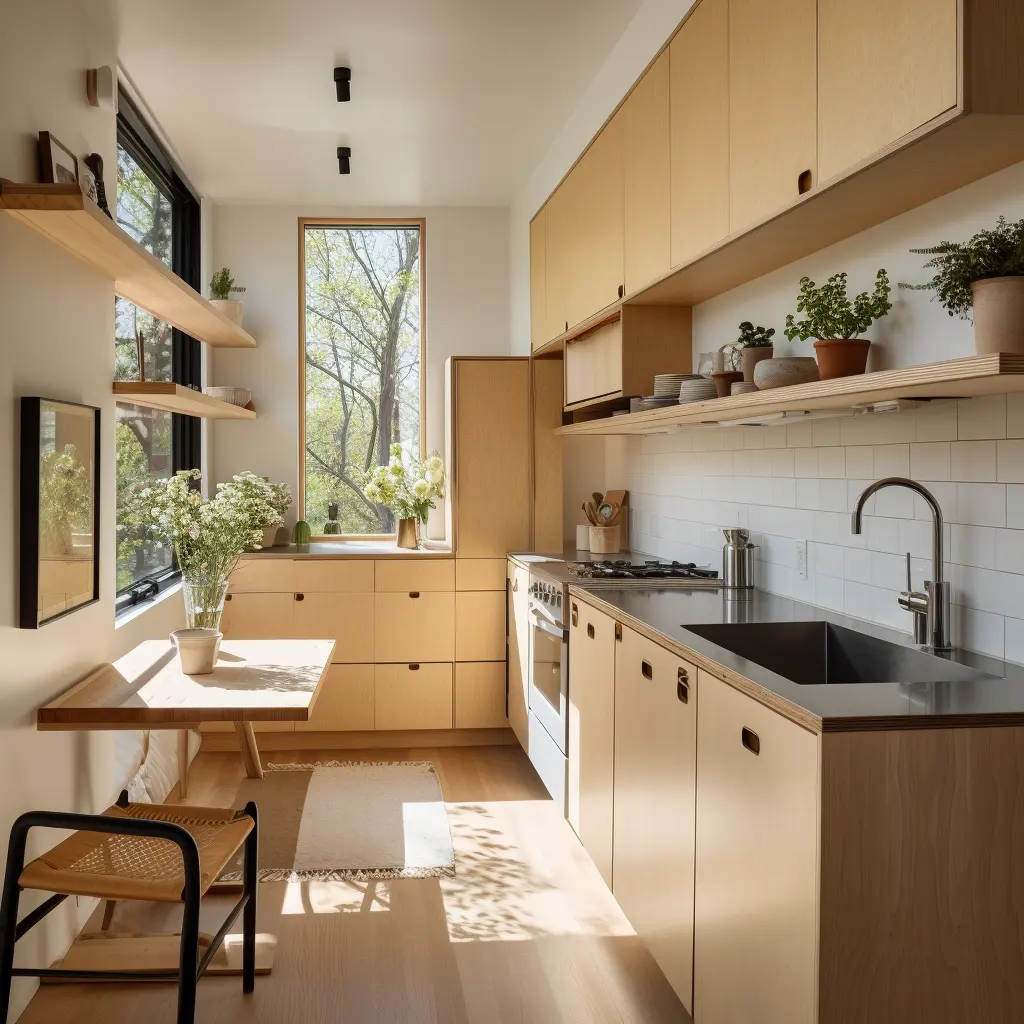
Renovate with EcoHome
EcoHome empowers homeowners to confidently build healthy and comfortable homes for a fair price.
Sign UpLocations View All →
NY
- Albany
- Binghamton
- Buffalo
- Esopus
- Freeport
- Hempstead
- Highland
- Kingston
- Long Beach
- Marlboro
- Mount Vernon
- New Paltz
- New Rochelle
- New York City
- Niagara Falls
- North Tonawanda
- Olivebridge
- Plattekill
- Rochester
- Rome
- Saugerties
- Schenectady
- Shandaken
- Syracuse
- Troy
- Utica
- Valley Stream
- Wallkill
- Woodstock
- Yonkers
NJ
- Bayonne
- Brick
- Camden
- Cherry Hill
- Clifton
- East Orange
- Edison
- Elizabeth
- Jersey City
- Lakewood
- Middletown
- Newark
- Old Bridge
- Passaic
- Paterson
- Toms River
- Trenton
- Union City
- Woodbridge
CT
PA
- Allentown
- Altoona
- Bethel Park
- Bethlehem
- Chester
- Easton
- Harrisburg
- Hazleton
- Lancaster
- Lebanon
- Monroeville
- Philadelphia
- Pittsburgh
- Reading
- Scranton
- Wayne
- Wilkes Barre
MD
- Abingdon
- Baltimore
- Bethesda
- Bowie
- Columbia
- Dundalk
- Ellicott City
- Frederick
- Gaithersburg
- Germantown
- Glen Burnie
- Potomac
- Rockville
- Severn
- Silver Spring
- Towson
- Waldorf

